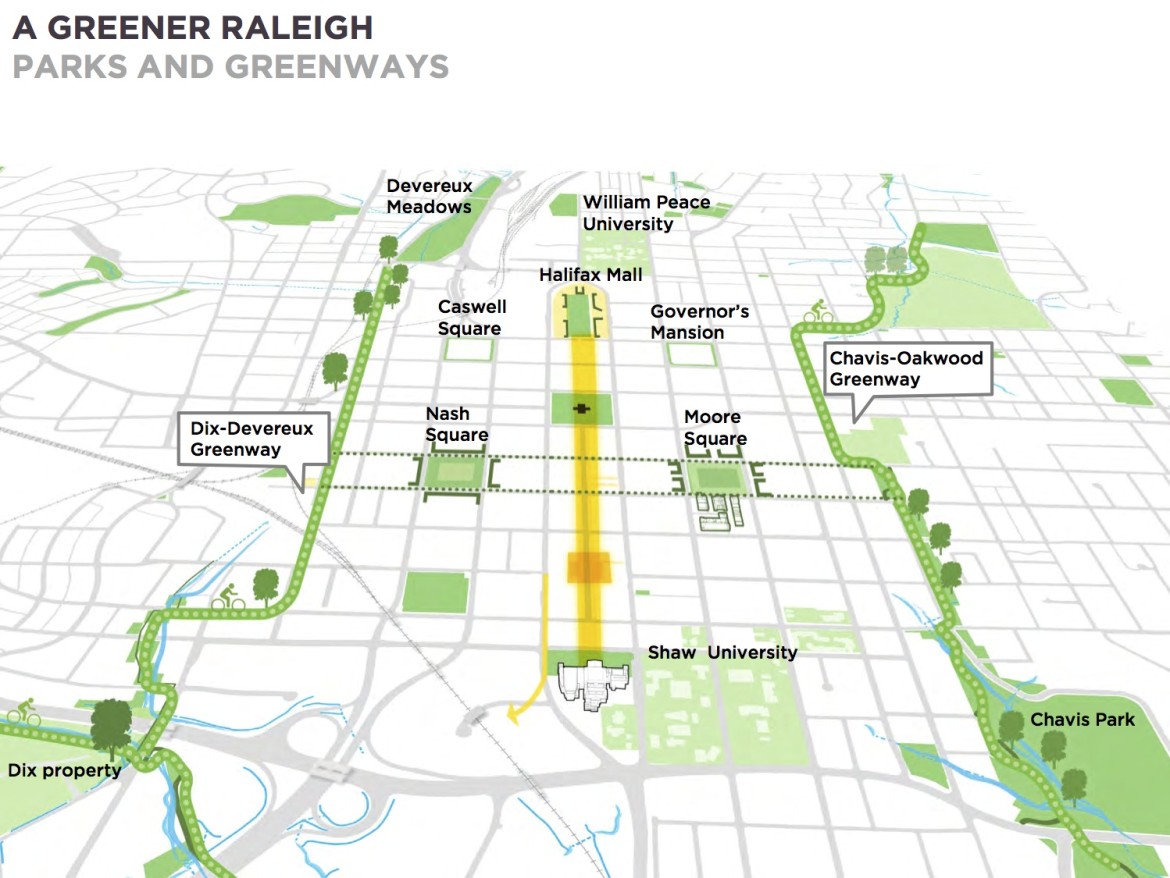It’s been 11 years since the city unveiled its Livable Streets Plan, a re-imagining of downtown Raleigh that opened up Fayetteville Street and led to the creation of the convention center.
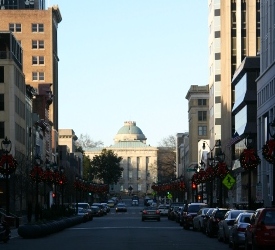
Fayetteville Street was reopened to vehicle traffic in 2006
In the time since, downtown has seen a tremendous growth in both residential and commercial development — sometimes to the consternation of those already living there. As a result, the city has come up with another plan for downtown — one that focuses on “experiences.”
During a presentation of the city’s new plan in September, Ken Bowers, the city’s interim planning director, noted: “Just walking down the sidewalk should be a great experience, that’s what we’re aspiring to here in Raleigh.”
It would be impossible to describe everything the plan aspires to in the space allotted here, but one of the core aspects of it would be the creation of a strong “civic spine” that connects William Peace University to Shaw University through Fayetteville Street and is flanked by greenways connecting Dix Park to Devereux Meadows and Chavis Park to Historic Oakwood.
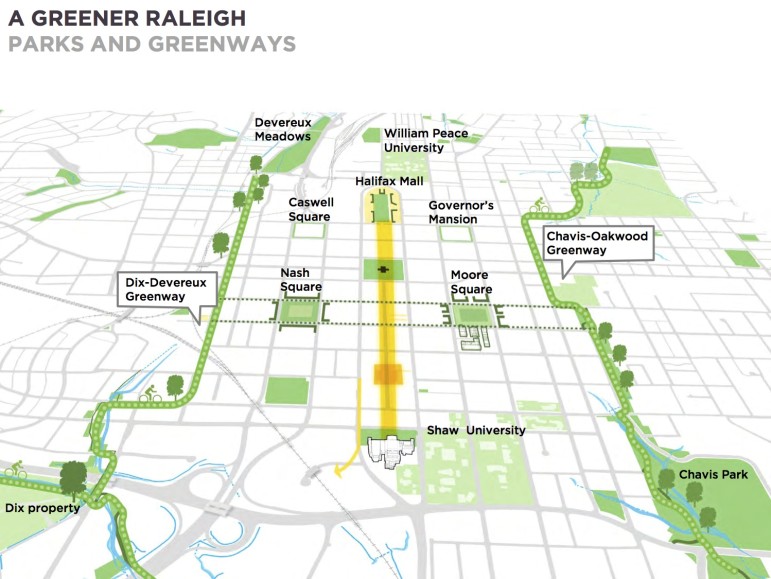
City of Raleigh
This picture illustrates the “civic spine” stretching between Shaw University and William Peace University, which is flanked by greenways connecting Dix Park to Devereux Meadows and Chavis Park to Historic Oakwood
As the new plan is more about adapting to and managing the city’s growth, it contains fewer concrete big-ticket items — like a new convention center — than its predecessor, although the possibility of a large-scale sports venue does come up, along with (seriously) aerial transit.
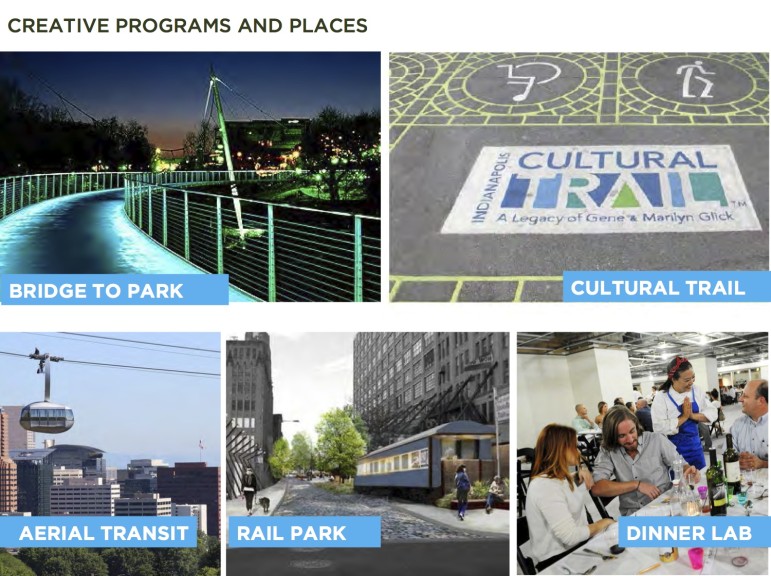
City of Raleigh
The Raleigh Downtown Experience Plan includes talk of Aerial Transit within the city
It also calls for for a downtown grocery store, although this would be up to private developers rather than the city to create.
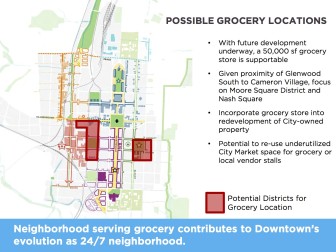
City of Raleigh
The makers of the new downtown plan received significant feedback on the need for a grocery store, and studied the best potential locations for one
The city would work to enhance existing areas, such as Nash Square, which will be furnished with a “restful interior” and turned into a counterbalance for the event-heavy Moore Square.
The plan would also widen the sidewalks on many downtown streets, including Peace, Martin and Hargett as part of an overarching goal to create a more pedestrian and bike-friendly downtown.
In addition to the grocery store, the plan also encourages private development throughout downtown, including a boutique hotel near the Moore Square bus station and mixed-use buildings around Nash Square.
Happening Now-Ish
Ah, you readers might not be ready for this yet, but your kids are gonna love it:
Deep down in Midtown Raleigh inside North Hills East, way back up in the space among the new condos, there sits an empty storefront made of glass and steel, where soon will live a restaurant named “B. Good.”
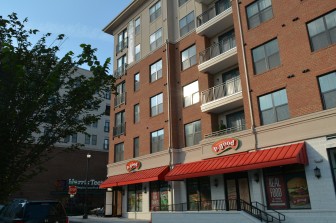
James Borden / Raleigh Public Record
North Hills East will soon be welcoming b-good to their already extensive collection of dining options
Final permits for the fit-out of the new “fresh fast-casual” joint were issued September 24, which means there’ll soon be many people coming from miles around, to eat and taste their food when the sun go down.
Permits were issued September 26 to Bobbit Design Build to construct a “cold dark shell” on a lot that will eventually be home to an office park on ACC Boulevard. Although the “cold dark shell” phrasing is simply construction-industry jargon, it also serves, in this reporter’s opinion, as an apt description for the soul of the nearby Brier Creek development. Just kidding. They’ve got a Target and a Wal-Mart!
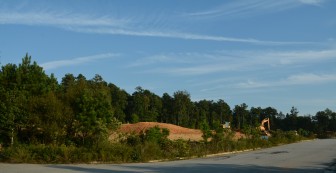
James Borden / Raleigh Public Record
The unlikely site of a project described as a “cold dark shell”
However, the largely undeveloped, slightly more industrial area in which this new building will sit is actually quite lovely, and despite the constant growth of the nearby retail and residential districts, the surrounding landscape is lush and surprisingly peaceful.
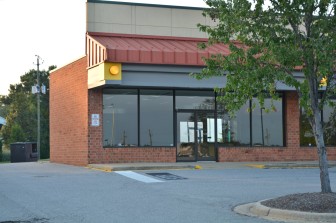
James Borden / Raleigh Public Record
The future site of a Chipotle in the Triangle Plaza Shopping Center off Capital Boulevard
A new Chipotle will soon be opening on Capital Boulevard inside the Triangle Plaza shopping center in a space once occupied by a nail salon, which moved two doors down. The shopping center sits roughly across Capital from the Triangle Town Center Mall. The center was previously home to a Best Buy, which has since moved slightly further south on Capital. The space it once occupied has been filled by Gander Mountain.
Not far from Wade Avenue, just off Dixie Trail, sits a small strip mall, currently home to the cleverly named “E-Hive” vapor lounge along with Pope’s Dry Cleaners, where they won’t bless the chemicals no matter how nice you ask.
In the property’s corner lot, work is well underway and interior permits were recently issued for the completion of a new “neighborhood” bar named “The Medlin.”
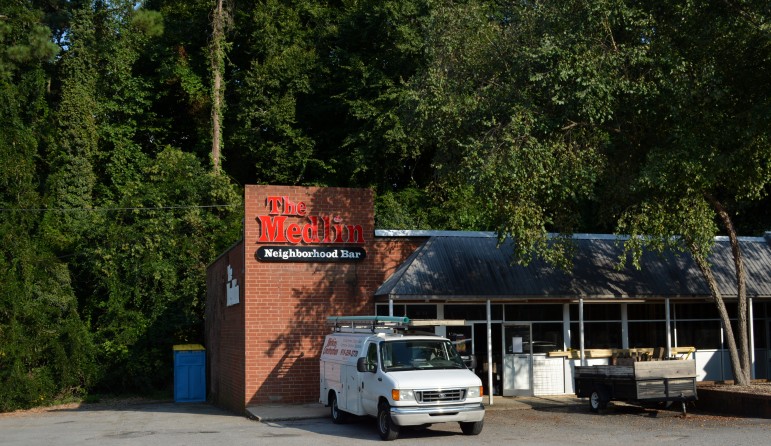
James Borden / Raleigh Public Record
The Medlin Bar, situated on the edge of a residential neighborhood, is likely to draw in a number of local patrons
The Meadow Wood Park Condominium development off Atlantic Avenue is set to expand, as permits were issued in late September for the construction of six new buildings there. Although these new dwellings will likely have a negligible impact on the already-heavy Atlantic Avenue traffic, too much residential development in this area — in which there are few cut-throughs to surrounding neighborhoods — will make Atlantic Avenue almost impossible to travel during the morning or evening rush.
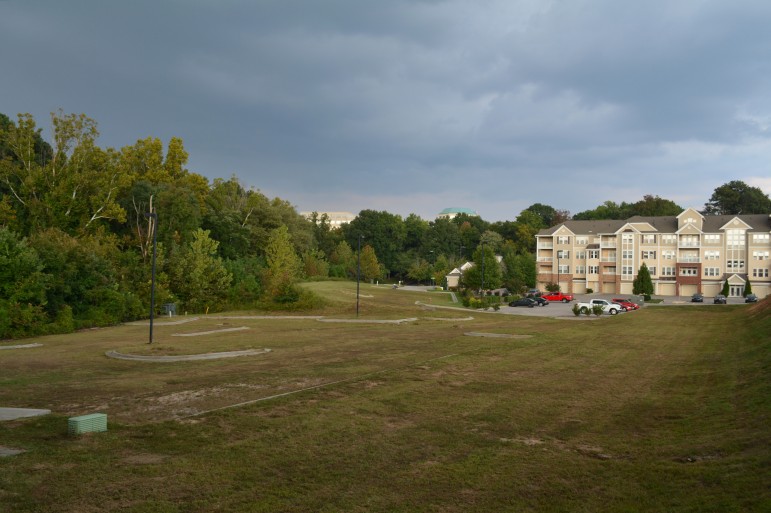
James Borden / Raleigh Public Record
The future site of new condominium buildings at Meadow Wood.
Coming Soon
No City Council or Planning Commission this week, so we’ll use this space to give a brief update on a question a reader emailed us, one which happens to tie in with something we wrote about the planning commission last week.
The question dealt with the Calvary Trace Apartments, scheduled to begin construction quite soon off Green Road. Several neighbors expressed concern over the lack of a fence or tree line to serve as a buffer for the complex, and the possibility of increased traffic due to the placement of it’s entrance.
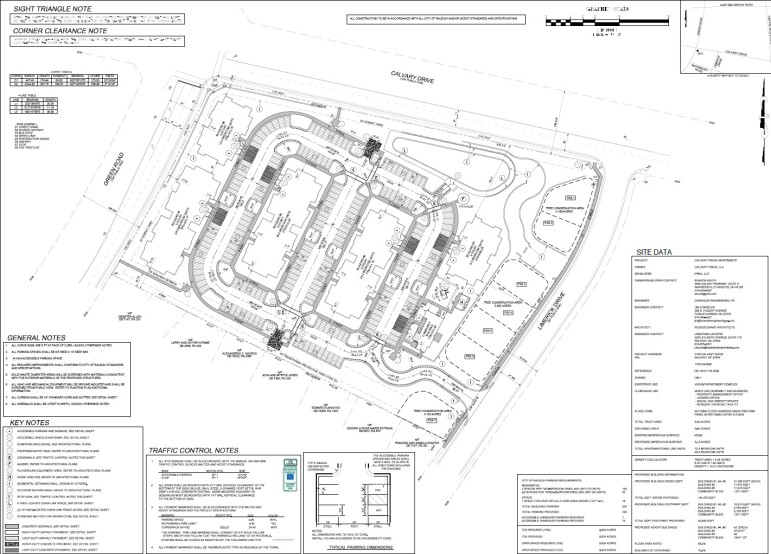
Part of the site plan for the Calvary Trace Apartments
The project was approved without a public hearing and without the involvement of the city’s planning commission, as per new city regulations, which meant these neighbors had few opportunities in which to express their concerns.
To simplify a complex issue, the state of North Carolina essentially made subjective approval of zoning issues illegal, which was reflected in the city of Raleigh’s new Unified Development Ordinance. It is the subjective approval process that once would have sent projects like Calvary Trace before the Planning Commission and ultimately to City Council for a Public Hearing. When staff approves a project administratively, these steps are no longer required, reducing the amount of input from affected neighbors.
The administrative approval granted August 4 for Calvary Trace noted that the 20-foot landscaped buffer provided was more than sufficient, and that the driveway entry to the development met city transportation and fire standards.
It’s impossible to say whether the developer might have granted neighbors any concessions had these concerns been addressed at a meeting of the Planning Commission, but there would have at least been a chance of it.
